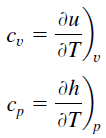About Calcium
Calcium is an alkaline earth metal, it is a reactive pale yellow metal that forms a dark oxide-nitride layer when exposed to air. Its physical and chemical properties are most similar to its heavier homologues strontium and barium. It is the fifth most abundant element in Earth’s crust and the third most abundant metal, after iron and aluminium.
Calcium – Specific Heat, Latent Heat of Fusion, Latent Heat of Vaporization
Specific heat of Calcium is 0.63 J/g K.
Heat capacity is an extensive property of matter, meaning it is proportional to the size of the system. Heat capacity C has the unit of energy per degree or energy per kelvin. When expressing the same phenomenon as an intensive property, the heat capacity is divided by the amount of substance, mass, or volume, thus the quantity is independent of the size or extent of the sample.
Latent Heat of Fusion of Calcium is 8.54 kJ/mol.
Latent Heat of Vaporization of Calcium is 153.3 kJ/mol.
Latent heat is the amount of heat added to or removed from a substance to produce a change in phase. This energy breaks down the intermolecular attractive forces, and also must provide the energy necessary to expand the gas (the pΔV work). When latent heat is added, no temperature change occurs. The enthalpy of vaporization is a function of the pressure at which that transformation takes place.
See also: Mechanical Properties of Calcium
Summary
| Element | Calcium |
| Specific Heat | 0.63 J/g K |
| Heat of Fusion | 8.54 kJ/mol |
| Heat of Vaporization | 153.3 kJ/mol |
| Density | 1.55 g/cm3 |
Source: www.luciteria.com


















